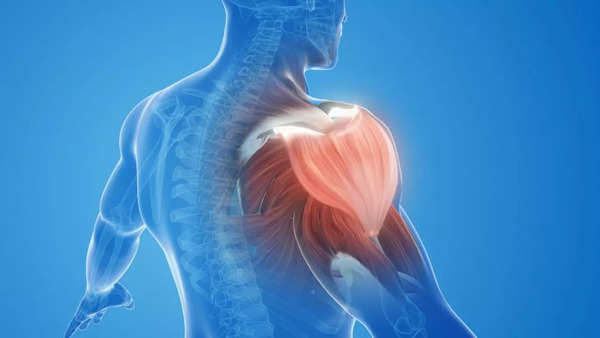It turns out belly fat isn’t the only fat that secretly damages health, there is another hidden fat that could raise risk of death or hospitalization from heart disease, according to new research published in European Heart Journal.
In another example of how body mass index (BMI) is an inadequate marker of heart health, the research sheds light on ‘muscle fat‘ that can put people at high risk of heart ailments. Researchers note that the ill effects of fatty muscle aren’t properly understood, but it has been linked with insulin resistance and type 2 diabetes apart from other chronic diseases.
The new research highlights that those who have relatively more amount of fat hidden in and around their muscles face higher risk of death or hospitalization from heart disease. This is irrespective of their BMI, which means people with ideal BMI can also have more fat around their muscles.”Knowing that intermuscular fat raises the risk of heart disease gives us another way to identify people who are at high risk, regardless of their body mass index,” says co-author Viviany Taqueti, director of the Cardiac Stress Laboratory at Brigham and Women’s Hospital.

“Intermuscular fat can be found in most muscles in the body, but the amount of fat can vary widely between different people. In our research, we analyse muscle and different types of fat to understand how body composition can influence the small blood vessels or ‘microcirculation’ of the heart, as well as future risk of heart failure, heart attack and death,” says Taqueti.
The researchers in the study say that while obesity is considered the biggest threat to cardiovascular health, BMI remains a flawed marker of cardiovascular prognonis and this is especially true in women, where high body mass index may reflect more ‘benign’ types of fat.
Understanding fat accumulation in muscles
Intermuscular fat refers to any fat beneath the muscle fascia, including fat between and within muscle groups, while intramuscular fat is the visible fat within a muscle. Intermuscular fat is classified as an ectopic fat depot, similar to visceral adipose tissue (VAT) in the abdomen.
While some amount of body fat is important for body function including small deposits embedded among our skeletal muscle fibers called intermuscular adipose tissue (IMAT), too much of it can lead to trouble. Excess fat amid skeletal muscles is referred to as a condition known as fat infiltration or myosteatosis.
While previous studies have established link between high levels of IMAT and insulin resistance much remains to be known about how it affects cardiovascular health.
The research looked at the connection between muscle quality and coronary microvascular dysfunction (CMD) – a condition where small blood vessels serving the heart are damaged, along with other heart issues.
“In our research, we analyze muscle and different types of fat to understand how body composition can influence the small blood vessels or ‘microcirculation’ of the heart, as well as future risk of heart failure, heart attack, and death,” Taqueti says.

Findings of the study
For the study, 669 people with an average age of 63, were evaluated at the Brigham and Women’s Hospital for chest pain and/or shortness of breath. Around 70% of them were women and 46% were non-white. They didn’t have obstructive coronary artery disease history.
The heart function of all the patients was assessed. The body composition of the people under study were analysed using T scans and the amount and location of fat and muscle in a section of their torso was also studied.
To quantify the amount of fat stored within muscles, researchers calculated the ratio of intermuscular fat to total muscle plus fat, a measurement they called the fatty muscle fraction.
Thereafter, patients were followed up for around six years. Researchers recorded whether any patients died or were hospitalised for a heart attack or heart failure.
It was found that people with higher amounts of fat stored in their muscles were more likely to have damage to the tiny blood vessels that serve the heart (coronary microvascular dysfunction or CMD), and they were more likely to go on to die or be hospitalised for heart disease.
For every 1% increase in fatty muscle fraction, there was a 2% increase in the risk of CMD and a 7% increased risk of future serious heart disease, regardless of other known risk factors and body mass index.
People who had high levels of intermuscular fat and evidence of CMD were at an especially high risk of death, heart attack and heart failure. On the other hand, people with higher amounts of lean muscle had a lower risk and fat stored under the skin or subcutaneous fat didn’t raise this risk.
“Compared to subcutaneous fat, fat stored in muscles may be contributing to inflammation and altered glucose metabolism leading to insulin resistance and metabolic syndrome,” Taqueti says. “In turn, these chronic insults can cause damage to blood vessels, including those that supply the heart, and the heart muscle itself.”


